As one of the activities held to celebrate the 40th Anniversary of the RCT, an international conference “Sinologists as Translators in the 17–19th Century” was organized and held on 27–28 Oct 2011.
It was not a particularly large conference. As stated by the Director of RCT, Prof. Lawrence Wang-chi Wong, it was designed on a small scale from its inception, with the plan being to identify a focused topic, one close to RCT's basic mission and falls in line with our previous endeavors, in order to make the conference a meaningful anniversary event. Early Sinologists in the 17–19th century, no matter where they came from, among many others, worked on a project similar to that of the RCT, introducing Chinese works through translation to the world at large, and promoting cultural exchange between China and the rest of the world. For the Westerners, this Sinological work was probably the major, if not the only, source of information on China, a wealthy and prosperous country, but also a mystery and curiosity. The way they presented, or represented, China, had a long-term impact on the perception and reception of the country and its culture in foreign lands.
In the day and a half conference, ten papers were presented by distinguished scholars with long records of accomplishment in the translation field.
| • |
Professor Bernhard Fuehrer from the University of London, presented his paper “August Pfizmairer (1808–1849) and his Translations of Chinese Poetry”, in which he discussed the two rather different approaches used by the Pfizmairer in his translation of the Chuci and of Bai Juyi's Bai Xiangshan shiji, as well as the influence of each work.
|
| • |
Professor Roland Altenburger of the University of Zürich presented his paper “The German Rendition of Huajian ji by Heinrich Kurz (Das Blumenblatt, 1836): Translation or Retranslation?”, in which he gave a brief biographical account of Kurz, and introduced his major sinological translation, Das Blumenblatt, which is considered by some as being the first full-length translation of any Chinese literary work into German. It is suspected Das Blumenblatt was translated from an early English translation rather than from the Chinese original, a claim which is scrutinized in the paper. |
| • |
Professor Thomas Zimmer of the University of Cologne, presented his paper: “Early Translation of Chinese Literature from Chinese into German— The Example of Wilhelm Grube (1855–1908) and His Translation of Investiture of the Gods 封神演義”, in which he gave a brief account of the reception of Chinese literature in the German language, a short account of Grube as a linguist, ethnologist and sinologist, as well as of his choice of translating Investiture of the Gods and how it influenced his translation. |
| • |
Professor Uganda Sze Pui Kwan of Nanyang Technological University, Singapore, presented her paper “Translation and British Colonial Mission: The Establishment of Chinese Studies in King's College London and Its First Chinese Professor, Samuel Turner Fearon", in which she discussed the establishment of the Chinese professorship in the University of London, its timing, the appointment of Samuel Fearon, his career, the influence this appointment had on the programme, and the reasons behind the appointment. |
| • |
Professor Lawrence Wang Chi Wong of The Chinese University of Hong Kong, presented his paper “‘Object of Curiosity’: Sir John Davis as Sinologist and Translator”, in which he gave a brief history of Davis, his career, his translations, his influence, his views on China and its people, and how these influenced Davis's translation activities and his choice of works to translate. |
| • |
Professor Richard J. Smith of the Rice University presented his paper “Collaborators and Competitors: Western Translators of the Yijing (易經 or Classic of Changes) in the Eighteenth and Nineteenth Centuries”. In his paper, Smith discussed the process of translating the Yijing by Western scholars and the issues of commensurability and incommensurability the work brought forth in the Western world. The translators and their personal and political motives for translating this work were also analyzed. |
| • |
Professor Man Kong Wong of the Hong Kong Baptist University presented his paper “Nineteenth Century Missionary — Translators as Sinologists: A Study of Translations of Daodejing by John Chalmers and James Legge”, which evaluated the importance of Daodejing and its translation process. The paper compared the translations by Chalmers and Legge, paying special attention to the interactions between the two translators, shedding new light on the strengths and weaknesses of the translators and their sinological contributions. |
| • |
Professor Thierry Meynard of the Sun Yat-sen University presented his paper “The Translation of the Lunyu in the Confucius Sinarum Philosophus (1687)”, in which he gave an account of the contributions of the Catholic missionaries in China in translating Chinese literature into Western languages. The paper explained how the Lunyu was translated, analyzed how Confucius was portrayed, and discussed the reception of the Lunyu in the West. |
| • |
Professor Feng-Chuan Pan of National Taiwan Normal University presented her paper “Elijah J. Bridgman and the Translation of the Xiaojing”. This paper explored the historical significance of the first English translation of the Xiaojing by Elijah Coleman Bridgman, reexamining Bridgman's translation by placing it within the historical and textual context of the Western translation of the Xiaojing in the early modern period. |
| • |
Professor Patricia Sieber of the Ohio State University presented her paper “Technologies of Translation: Peter Perring Thoms' Bilingual Edition of the Cantonese Ballad Huajian 花箋/Chinese Courtship (1824)”, which focused on translation as one important facet of sinological activity in an effort to delineate how Peter Perring Thoms negotiated technological, editorial, and genre-related aspects of translation between source and target cultures in his 1824 edition-cum-translation of the Cantonese ballad Huajian/Chinese Courtship (The Flowery Notepaper). |
During the conference each paper was thoroughly discussed, with constructive views advanced on not only on how to improve the papers but also on directions for further research on this important topic. There was deliberation on the more obvious questions such as why certain texts were chosen for translation, what translation strategy was adopted to meet the special agenda, and what messages, correct or not, were transmitted through the translations. Interestingly enough, some issues that had not attracted previous attention, such as the role of Chinese collaborators/assistants, indirect translation through a “medium” language, the use of traditional commentaries, the publishing industry and the circulation of the translations, were also brought up and examined. Before closing the conference, there was a session to explore the future aims and prospects of the project. The RCT Director announced that “Sinologists as Translators in the 17–19th Century” has been established as one of the RCT Research Programmes, meaning that the RCT will go on to promote, facilitate and support research on this topic. Views were exchanged on the possibility of holding a second conference and/or workshops in future. It was also agreed that the papers of the present conference would be revised and published. Participating scholars have already sent the revised papers back to the RCT. There will be a blind external review process, and once approved by external reviewers, the conference papers will be published by the RCT in its Asian Translation Traditions Series.
“Sinologist as Translators in the 17–19th Century Conference” has been sponsored by the Institute of Chinese Studies CUHK, and Chung Chi College CUHK. Their generous supports are greatly appreciated.
(Back to table of contents) |
翻譯研究中心於2011年10月27–28日舉辦“漢學家與17–19世紀漢籍西譯國際研討會”,是慶祝中心成立四十周年的其中一項活動。
翻譯研究中心主任王宏志教授明言,是次會議規模較小,但早在籌備初期即決定把會議定位為小型的高端國際學術研討會,要求會議主題清晰明確,並切合RCT的基本理念及過去的活動,而所有應邀出席會議的學者均為相關領域的專家,以期會議能成為一項深具意義的周年紀念活動。17–19世紀的漢學家,不論來自何方或成就如何,他們都不約而同地透過翻譯把漢籍弘揚到世界各地。RCT多年來在翻譯中國文學及推動中外文化交流的努力,跟早年漢學家們的活動可謂不謀而合。對當時的西方世界來說,漢學家的譯作是探索和理解中國——這個富裕而神秘的珍奇國度——的主要渠道,甚至可能是唯一的途徑。漢學家所描述和呈現的中國,對外國人怎樣理解中國及中國文化有深遠的影響。
在這次為期一天半的會議上,十位在漢籍西譯方面素有研究的學者應邀出席會議,並宣讀了以下論文(具體內容詳見英文版):
| • |
Bernhard Fuehrer 教授(University of London),題目:August Pfizmairer (1808–1849) and his Translations of Chinese Poetry
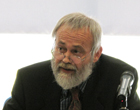 |
| • |
Roland Altenburger 教授(University of Zürich),題目:The German Rendition of Huajian ji by Heinrich Kurz (Das Blumenblatt, 1836): Translation or Retranslation?
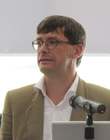 |
| • |
Thomas Zimmer 教授(University of Cologne),題目:Early Translation of Chinese Literature from Chinese into German— The Example of Wilhelm Grube (1855–1908) and His Translation of Investiture of the Gods 封神演義
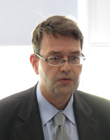 |
| • |
關詩珮教授(新加坡南洋理工大學),題目:Translation and British Colonial Mission: The Establishment of Chinese Studies in King's College London and Its First Chinese Professor, Samuel Turner Fearon
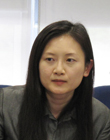 |
| • |
王宏志教授(香港中文大學),題目:“Object of Curiosity”: Sir John Davis as Sinologist and Translator
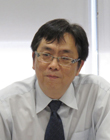
|
| • |
Richard J. Smith 教授(Rice University),題目:Collaborators and Competitors: Western Translators of the Yijing (易經 or Classic of Changes) in the Eighteenth and Nineteenth Centuries

|
| • |
黃文江教授(香港浸會大學),題目:Nineteenth Century Missionary — Translators as Sinologist: A Study of Translations of Daodejing by John Chalmers and James Legge
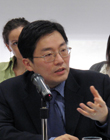 |
| • |
梅謙立教授(中山大學),題目:The Translation of the Lunyu in the Confucius Sinarum Philosophus (1687)
 |
| • |
潘鳯娟教授(國立臺灣師範大學),題目:Elijah J. Bridgman and the Translation of the Xiaojing
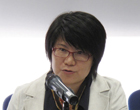 |
| • |
Patricia Sieber 教授(The Ohio State University),題目:Technologies of Translation: Peter Perring Thoms' Bilingual Edition of the Cantonese Ballad Huajian 花箋/ Chinese Courtship (1824)
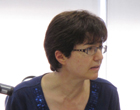
|
在會上,學者有充裕的時間深入討論每篇論文的內容,積極提出意見,同時交換了日後作進一步研究方向的看法。大家亦針對一些重要論題發表見解,如漢學家怎樣就譯作選材、不同目的背後有何翻譯策略、譯作所傳達的訊息及其可信程度等。學者還在會上提出了一些過去沒有得到足夠關注的論題,例如有關漢學家的中國合作者或助手、通過“第三方語言”的間接翻譯、傳統詮釋和註疏的運用,以及出版業與譯作的發行等,會議閉幕前更特別安排了一個環節,共同商討這研究項目今後發展的目標及前景。中心主任宣佈“漢學家與17–19世紀漢籍西譯”將成為RCT研究項目之一,RCT將繼續支持並資助此研究項目。學者對舉辦第二屆會議或工作坊熱烈地交流了意見,並通過了會議論文經修訂後出版的計劃。各學者近日已陸續把完成修訂的論文送回,翻譯研究中心在作格式整理後會外送作匿名審查,如獲正式通過,將收入中心所主辦“亞洲翻譯傳統”叢書系列內出版。
“漢學家與17–19世紀漢籍西譯國際研討會”得到香港中文大學中國文化研究所及崇基書院贊助,謹此致謝。
(返回目錄)
|
